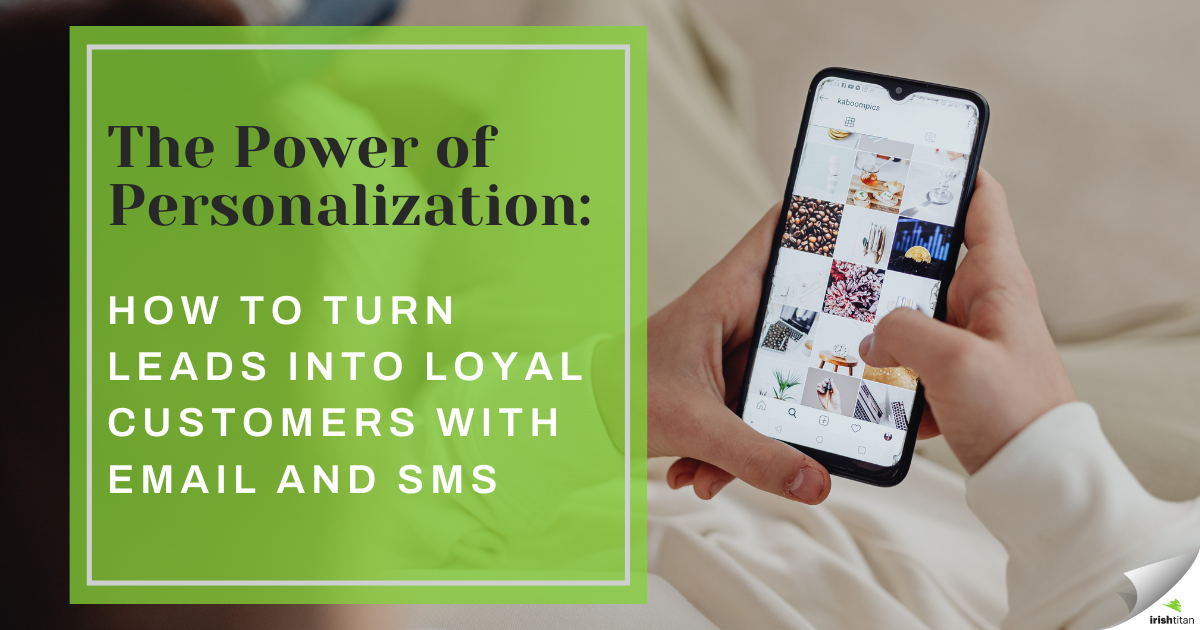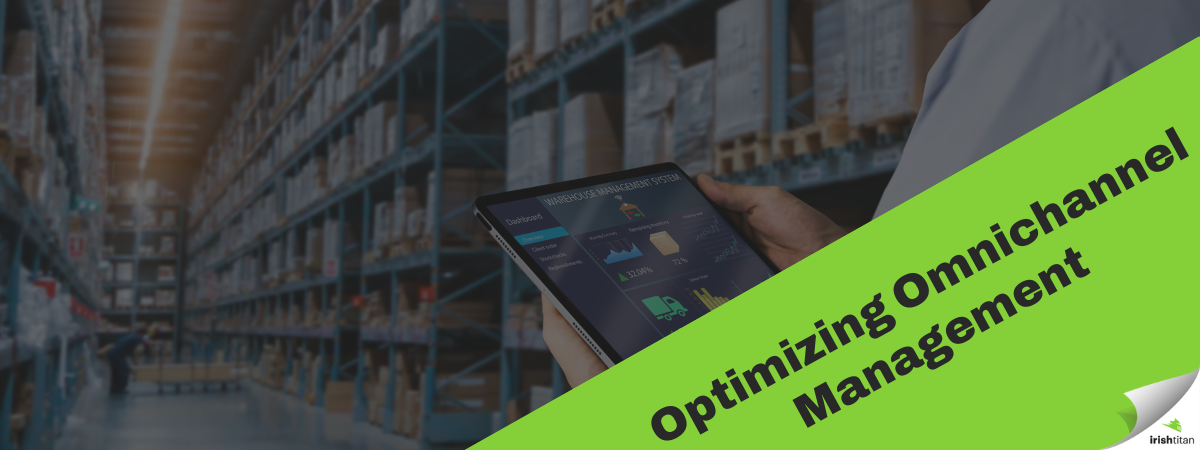Optimizing Omnichannel Management: The Key to Cohesive Selling
Did you know that 73% of consumers shop across multiple channels before making a purchase? In today’s eCommerce landscape, simply listing your products on multiple platforms isn’t enough—you need a seamless backend system to keep inventory, orders, and fulfillment in sync.
That’s where Etail Solutions and Linnworks come in. These platforms help businesses prevent overselling, avoid order delays, and deliver a smooth shopping experience by providing real-time inventory and fulfillment visibility across all sales channels.
Getting listed on multiple channels and selling across them is the easy part. The real challenge lies in managing those channels efficiently on the backend. You might be selling in multiple places, but if your inventory is shared across channels or sourced from multiple locations, are they all properly synchronized? How does one system know...
While both solutions solve similar challenges, they cater to different types of businesses. The right choice depends on your company’s size, complexity, and automation needs. Let’s explore their strengths and key differentiators.
Why an Omnichannel Experience Matters
A well-managed omnichannel strategy leads to stronger customer relationships, higher conversion rates, and a competitive edge. Here’s how:
- Consistency Builds Trust – Customers engage with your brand across multiple channels—your website, social media, marketplaces, and physical stores. A unified experience in branding, pricing, and inventory reinforces credibility.
- Higher Retention & Loyalty – Shoppers expect seamless interactions. If they encounter friction (e.g., price discrepancies or stock issues), they’ll leave for a competitor. A smooth, reliable experience keeps them coming back.
- Boosted Conversion Rates – Reducing barriers to purchase increases conversions. Examples of friction include different prices online vs. in-store or unavailable inventory. Customers should be able to browse on one channel (social media), add to cart on another (mobile app), and complete the purchase elsewhere (desktop or in-store) effortlessly.
- Better Data & Personalization – Connecting data across platforms enables personalized recommendations and targeted marketing, enhancing the shopping experience.
- Maximized Sales Opportunities – Offering multiple purchasing options ensures customers can buy in the most convenient way for them.
- Stronger Competitive Advantage – Businesses excelling in omnichannel management outperform competitors who don’t. Consumers expect integration—those who deliver stand out.
Essential Components of Omnichannel Management
Regardless of platform differences, successful omnichannel management relies on these key factors:
- Inventory & Order Fulfillment – Real-time synchronization prevents overselling and ensures efficient shipping.
- Channel Performance Monitoring – Analytics help optimize pricing, stock allocation, and customer engagement.
- Customer Data Management – Connecting insights across platforms enables better personalization.
- Technology & Automation – Reducing manual processes enhances accuracy and efficiency.
At a minimum, your omnichannel strategy should ensure:
- Synced inventory & orders across all channels
- Seamless checkout experiences
- Consistent pricing & promotions
- Flexible fulfillment options
- Unified customer support
- Continuous performance tracking
Etail Solutions vs. Linnworks: Which One is Right for You?
While both platforms enhance omnichannel management, they cater to different business needs:
| Feature | Etail Solutions (Enterprise Focused) | Linnworks (Mid-Sized & Growing Businesses) |
|---|---|---|
| Best For | Large brands, retailers, and 3PLs | ecommerce sellers, multi-product brands, 3PLs |
| Inventory Management | Dynamic stock allocation across warehouses and suppliers | Real-time inventory syncing across marketplaces |
| Order Fulfillment | Automated order routing to the most cost-effective fulfillment center | Automation for order processing and shipping |
| Marketplace Integrations | Deep retailer & marketplace integrations (Amazon, Walmart, Target) | Direct integrations with Amazon, eBay, Shopify, and more |
| Scalability | Built for high-volume sellers with complex operations | Ideal for growing businesses needing automation |
| Ease of Use | Requires customization and configuration | Faster setup and user-friendly interface |
| Key Differentiator | Enterprise-level automation & fulfillment optimization | Plug-and-play multichannel automation |
Choose Etail Solutions if: You need a highly customizable, enterprise-grade solution with deep integrations and automation for large-scale operations.
Choose Linnworks if: You want a simple, efficient platform to manage multichannel sales without the complexity of custom enterprise solutions.
How These Tools Enhance Omnichannel Management
Both platforms help businesses achieve a connected omnichannel experience, but they do so in distinct ways:
Etail Solutions: Advanced Automation for Large-Scale Retailers
Dynamic Inventory & Order Orchestration – Optimizes stock allocation across multiple warehouses, suppliers, and fulfillment centers in real time to reduce overselling and backorders.
- Provide inventory visibility by SKU, supplier, and stocking locations to help prevent overselling.
- Manage orders from one centralized platform for all sales channels, regardless of source format.
- Real-time ability to drive listing visibility, content pricing, and promotional offers based on regional inventory and fulfillment costs.
Automated Order Routing – Intelligently routes orders to the most cost-effective fulfillment source (3PL, dropshipper, or in-house warehouse).
- Selects the best fulfillment option based on company-defined preferences.
- Reduce fulfillment costs by automatically selecting the lowest-cost shipping and fulfillment option.
- Adaptive routing dynamically shifts order fulfillment based on stock availability, minimizing split shipments and delays.
Marketplace & Retailer Integrations – Deep connections with major marketplaces enable dynamic repricing, demand forecasting, and automated listings.
- A wide range of integrations minimizes IT involvement, including sales channels, suppliers, fulfillment centers, and existing systems via EDI, APIs, flat files, and custom integrations.
- Third-party inventory management is seamlessly integrated, allowing for FBA, Walmart WFS, and other marketplace fulfillment strategies within a unified system
- Real-time inventory sync ensures accurate stock levels across all channels to prevent overselling.
- Dynamic pricing optimization adjusts listings automatically based on demand, competitor pricing, and inventory levels.
Enterprise-Grade Scalability – Handles complex fulfillment networks and high order volumes efficiently, ideal for enterprise-level sellers.
- Handles peak-season demand surges with automated order prioritization and intelligent stock allocation.
- Ensures compliance with marketplace SLAs by automating fulfillment processes and adapting to ever-changing platform requirements
Linnworks: Simple, Scalable, and Automation-Driven
Centralized Inventory & Order Management – Provides a single dashboard to manage stock levels, orders, and fulfillment across multiple marketplaces.
- All of your inventory data across multiple warehouses and bin locations from a central dashboard
- All selling channels updated with accurate inventory availability
- Clear view of your order volumes over any given period of time
- Create, edit, or cancel any order from one page
- Sort and filter your orders based on criteria that is important to you
- Allows you to store similar SKUs across multiple bin racks
- Using lots feature, organize inventory efficiently
- Client portal for 3PL clients
- Stay on top of and track stock levels using a reporting dashboard
__Automation-Driven Efficiency__ – Reduces manual work with automated order processing, shipping, and inventory updates.
- No more guesswork in your demand forecasting
- Create purchase orders at the click of a button
- Allocate orders to the batches that need to go out first
- Automated pick-list
- The ability to map every zone, group, and bin type
- Barcode scans and stock counts
- Auto-assign the most effective ways to pack orders
- Automated rules that can disable listings
- Auto-generated shipping manifests you can keep track of
Seamless Multi-Channel Integrations – Native integrations with Amazon, eBay, Shopify, and more ensure real-time synchronization without complex setup.
- Access integrations
- Publish entire catalog on multiple channels from one place
- Revise hundreds of listings at once
- Pricing that automatically syncs
Scalability & Flexibility – Suitable for growing eCommerce businesses, Linnworks supports multi-location fulfillment and 3PL integrations to scale operations efficiently.
- Cater to your 3PL clients with speed and ease
- First in, first out inventory models
- Location-specific supplier lead times
- Accurate stock forecasting
- Easily identify what needs reordering and set up purchase orders
- Set up optimal stock levels
Fast Implementation & Usability – Compared to complex enterprise solutions, Linnworks is easier to set up and use, making it an ideal choice for mid-sized businesses.
- Powerful rules engine
- Easy Routing rules
- Shipping Quote Feature
- Intuitive dashboards that give insights into key sales and financial metrics
- Craft reports that compare all facets of the multichannel selling journey
- View reports across multiple time periods
The Key to Omnichannel Success
A well-executed omnichannel strategy builds trust, improves retention, drives conversions, and enhances your competitive advantage. But success depends on how well you manage backend operations.
- Enterprise retailers needing deep automation? Etail Solutions is a powerhouse for scaling efficiently.
- Growing eCommerce brands looking for ease of use? Linnworks simplifies multichannel selling with automation and real-time visibility.
The bottom line: The right tool depends on your business model and goals.
More reads





More from Ecommerce...

Let’s face it: the days of “Hi [First Name]” passing for personalization are over. Today’s customers expect more—and rightfully so. They want content that reflects their interests, habits, and timing. And they want it in the channels they actually use: their inbox and their phone.

Stop chasing shiny tools. Start building a stack that sells. Between the endless app directories, sales demos, and LinkedIn hot takes, it’s easy to get overwhelmed with tech. Every platform promises more leads, higher engagement, better ROI, and a head massage while you watch the conversions roll in.

If email and SMS are your lead generation MVPs, data privacy is the referee—and if you don’t play by the rules, you’re getting benched. As we continue this month’s focus on nurturing and converting leads, there’s one vital piece we can’t ignore: compliance. All the segmentation, personalization, and automations in the world won’t help you if your campaigns aren’t built on a solid, legal foundation.
